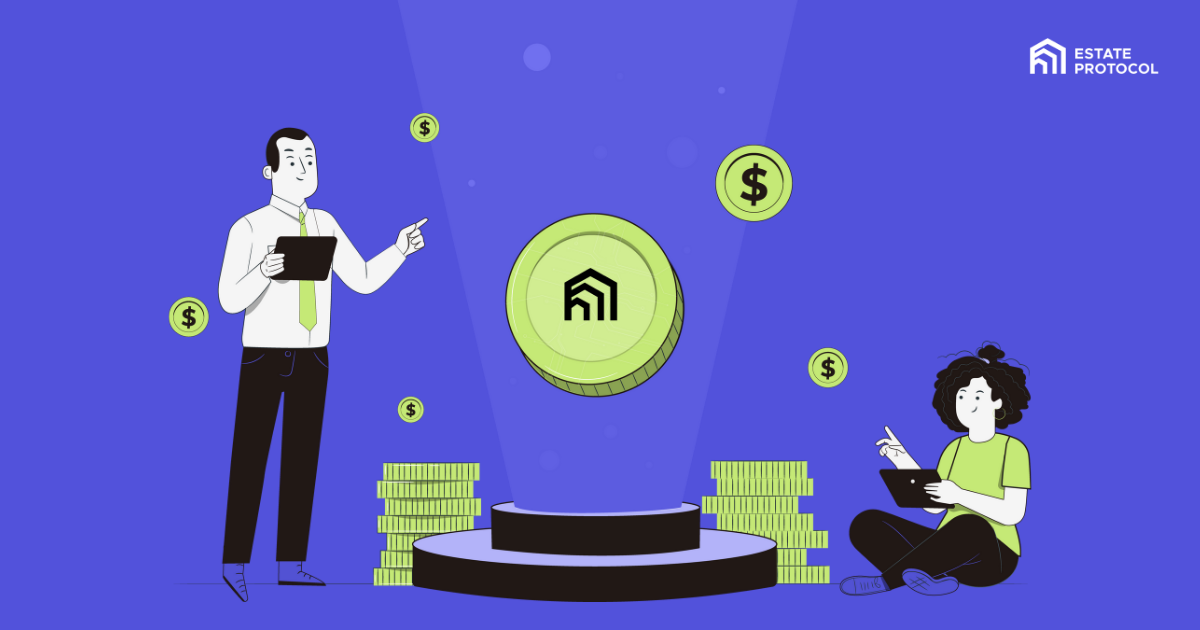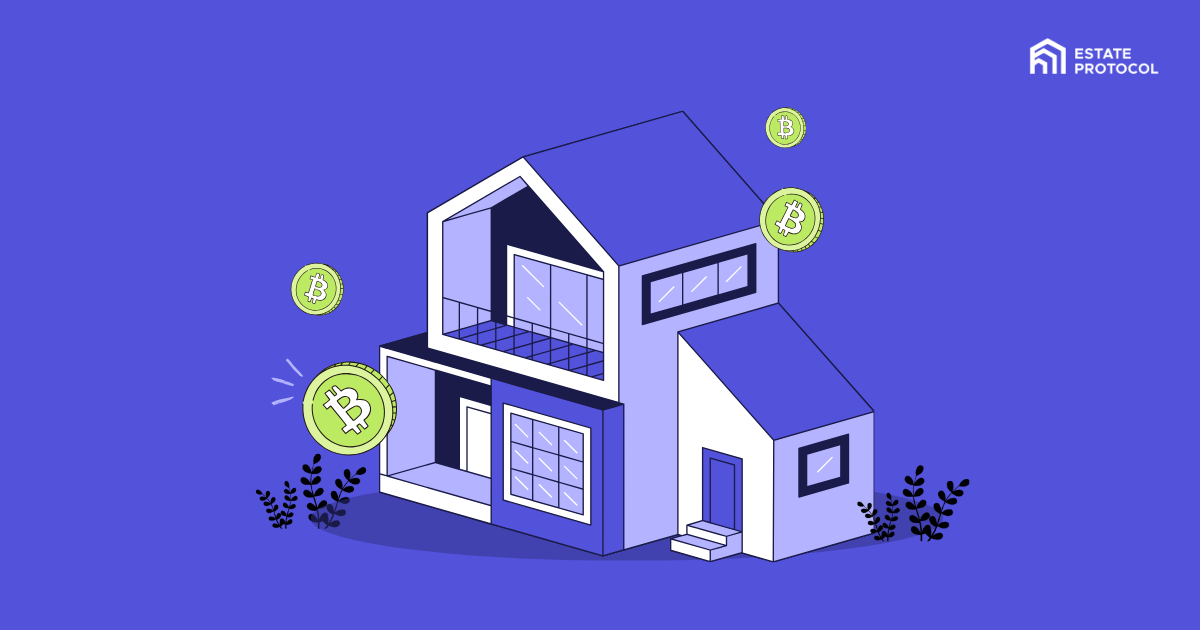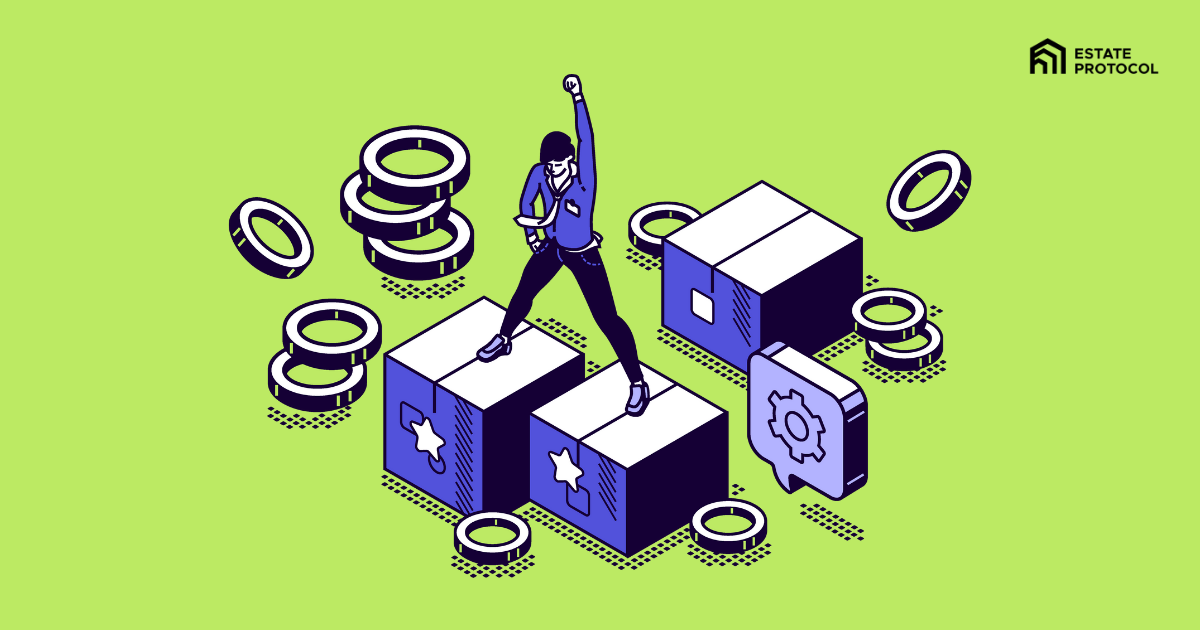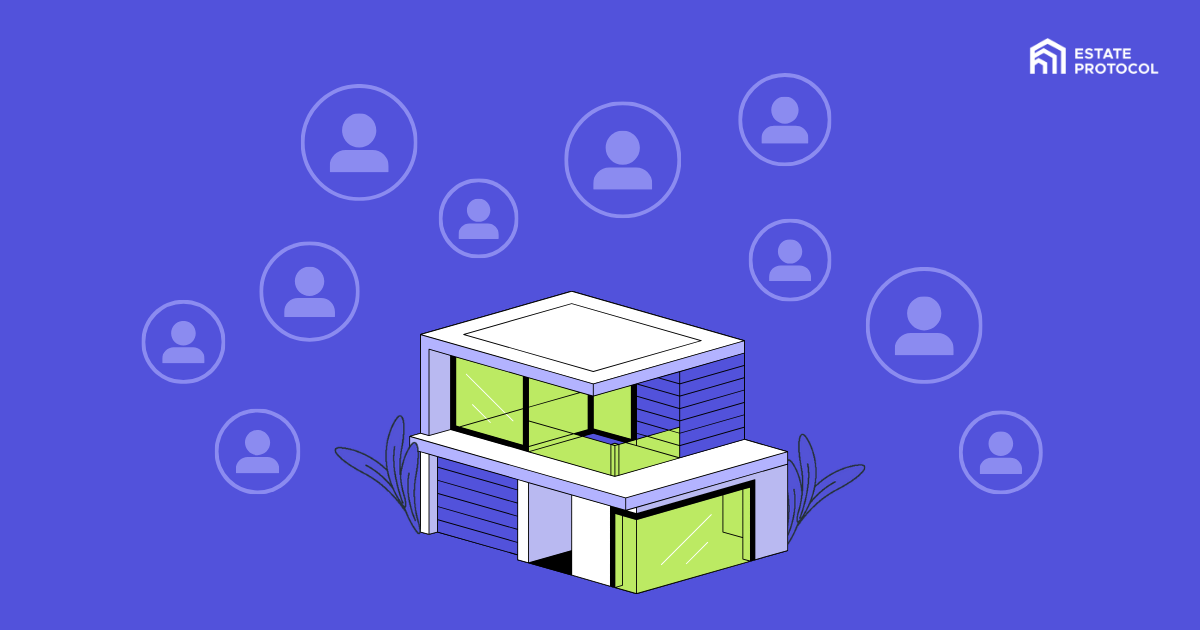Welcome to our article on real world asset tokenization! In this piece, we will explore the concept of real-world asset tokenization, how it works, and the benefits it offers. Whether you’re new to the topic or looking to deepen your understanding, we’ve got you covered. So, let’s dive in!
Key Takeaways:
- Real-world asset tokenization creates virtual investment vehicles linked to tangible assets like real estate, art, and precious metals.
- Tokenization offers advantages such as lower costs, increased liquidity, and faster settlement times.
- Examples of real-world asset tokenization include fractionalized shares of art and tokenized gold.
- Smart contracts play a crucial role in the tokenization process, enabling the transformation of physical assets into digital tokens.
- While real-world asset tokenization offers benefits, it also comes with risks such as volatility and regulatory challenges.
What does Tokenization Generally Mean?
Tokenization is the process of converting a real-world asset into a digital token. This can be done on a blockchain, which is a distributed ledger that allows for secure, transparent and tamper-proof record-keeping. Tokenization can be used for a wide variety of assets, including but not limited to:
- Physical assets such as commodities, art or real estate
- Intangible assets such as intellectual property or loyalty points
- Financial assets such as stocks, bonds or derivatives
Tokenization has a number of advantages over traditional methods of asset ownership and transfer. For one, it can greatly reduce the cost and time associated with transactions. Tokenized assets can be traded 24/7 on a global market, without the need for intermediaries such as brokerages or banks. This also makes tokenized assets more liquid, as they can be easily converted into cash or other assets.
Another advantage of tokenization is that it increases security and transparency. Tokenized assets are stored on a blockchain, which is a secure and immutable digital ledger. This means that tokenized assets can be tracked and traced at all times, which reduces the risk of fraud and corruption.
Lastly, tokenization can open up new investment opportunities. For example, tokenized real estate can be fractionalized, meaning that anyone can invest in a property, regardless of their financial status. This opens up a whole new world of investment opportunities for individuals and institutions alike.
Asset tokenization is a key application of blockchain technology that is revolutionizing the way we think about and trade assets. Tokenization has the potential to streamline and simplify many aspects of our lives, from financial transactions to the ownership and transfer of physical and intangible assets.
What is Real-World Asset Tokenization?
Asset tokenization is the process of converting a real-world asset into a digital token that can be stored on a blockchain. This process allows for the fractional ownership of assets, as well as the ability to easily transfer ownership of these assets. Tokenization also allows for the creation of smart contracts that can automate certain processes related to the ownership and transfer of these assets.
Real-world asset tokenization has opened up a plethora of opportunities across various sectors. Let’s explore some notable examples:
Tokenization in Art
Art lovers can now participate in the ownership of masterpieces through fractionalized shares. Tokenization allows collectors to buy “shares” of artworks, such as iconic paintings by renowned artists like Andy Warhol, providing access to the art market at various price levels.
Tokenized Gold Market
The gold market has also embraced tokenization, enabling investors to gain exposure to the precious metal without the need for physical ownership. With over $1 billion in investments, tokenized gold provides an accessible and secure way to invest in gold, attracting both retail and institutional investors.
Tokenized U.S. Treasury Bonds
Real-world asset tokenization is revolutionizing the bond market as well. Tokenized U.S. Treasury bonds offer a digital representation of government-issued debt securities, allowing investors to trade them with ease. The demand for tokenized U.S. Treasury bonds is on the rise, with the market capitalization of tokenized money market funds reaching nearly $500 million.
Financial Instruments and Beyond
In addition to art, gold, and bonds, financial firms are exploring tokenization for various assets they already trade, including stocks, commodities, and more. The potential for tokenization extends beyond the financial sector, with applications in real estate, manufacturing, and other industries.
| Use Case | Key Features |
|---|---|
| Tokenization in Art | Allows fractional ownership of artworks |
| Tokenized Gold Market | Enables investment in gold without physical ownership |
| Tokenized U.S. Treasury Bonds | Provides a digital representation of government-issued debt securities |
| Financial Instruments and Beyond | Expanding tokenization to stocks, commodities, real estate, and more |
How Real World Asset Tokenization Works
Real-world asset tokenization is made possible through the use of smart contracts, which are self-executing contracts with the terms of the agreement directly written into the code. These contracts are built on the blockchain and automatically execute transactions once the pre-defined conditions are met. In the context of asset tokenization, smart contracts play a crucial role in transforming physical assets into digital tokens.
The tokenization process begins with the selection of an asset representation model, which determines how the asset will be represented on the blockchain. Common representation models include fractional ownership, where the asset is divided into smaller units, and whole ownership, where each token represents the entirety of the asset. Once the representation model is chosen, the asset is modeled and the informatics code is reviewed to ensure technical and security aspects are in place.
After the asset is modeled and the code is reviewed, it is deployed onto the blockchain. This involves creating a unique token for the asset and linking it to the corresponding smart contract. The smart contract governs the ownership, transfer, and trading of the asset tokens. Asset tokens can be backed by various types of assets, such as real estate, art, or commodities, and adhere to token standards such as ERC-20 or ERC-721.
Role of Smart Contracts in Real World Asset Tokenization:
- Enable the creation of digital tokens that represent real-world assets on the blockchain.
- Automate the execution of transactions and enforce the terms of the agreement.
- Provide a transparent and tamper-proof record of ownership, transfers, and transactions.
- Facilitate fractional ownership and enable the division of assets into smaller tradable units.
Asset Representation Models:
| Model | Description |
|---|---|
| Fractional Ownership | The asset is divided into smaller units, allowing multiple individuals to own a fraction of the asset. |
| Whole Ownership | Each token represents the entirety of the asset, with the ownership transferable as a whole. |
By leveraging smart contracts and asset representation models, real-world asset tokenization opens up new possibilities for investors, allowing them to access previously illiquid assets and trade them with greater ease. The use of blockchain technology ensures transparency, immutability, and security in the tokenization process, providing a solid foundation for the future of asset trading and investment.
Benefits of Real World Asset Tokenization
Real-world asset tokenization offers a range of benefits that are transforming the financial landscape. One of the key advantages is increased liquidity, allowing illiquid assets like fine art and real estate to be traded on the secondary market. This opens up opportunities for investors to access assets that were traditionally out of reach, while also providing sellers with more options for monetizing their holdings.
Transparency is another key benefit of asset tokenization. By leveraging blockchain technology, digital tokens provide an immutable record of ownership and rights. This transparency enhances trust and confidence in transactions, as all relevant information is securely stored and can be easily verified.
Reduced transaction fees are also a significant advantage of real-world asset tokenization. Smart contracts, which are the foundation of tokenization, automate and streamline the transaction process, eliminating the need for intermediaries and reducing associated costs. This cost efficiency benefits both buyers and sellers, making transactions more affordable and accessible.
Table: Benefits of Real World Asset Tokenization
| Benefit | Description |
|---|---|
| Liquidity | Increases liquidity by allowing illiquid assets to be traded on the secondary market. |
| Transparency | Offers transparency through the use of blockchain technology, providing an immutable record of ownership and rights. |
| Reduced Transaction Fees | Smart contracts automate and streamline transactions, eliminating the need for intermediaries and reducing associated costs. |
| Market Efficiency | Enhances market efficiency by enabling faster and more secure transactions. |
Risks Associated with Real World Asset Tokenization
While real-world asset tokenization offers numerous advantages, there are also risks that need to be carefully considered. These risks can include volatility risk, valuation risk, and regulatory challenges.
Volatility Risk
One of the risks associated with real-world asset tokenization is volatility risk. This risk arises from the potential price variability of illiquid assets that are tokenized. These assets can experience significant price fluctuations, which may deviate from their fair value. It is crucial for investors to carefully assess the volatility of the underlying assets before participating in asset tokenization.
Valuation Risk
Valuation of digital assets, especially payment and utility tokens, can be challenging due to factors such as global supply and demand dynamics. Determining the accurate value of these assets can be complex, and misjudgments can lead to inaccurate pricing and investment decisions. It is important for investors to understand the valuation methodologies used for different types of assets and carefully evaluate the risks associated with these valuation models.
Regulatory Challenges
Regulatory challenges pose another risk in the realm of real-world asset tokenization. As security regulations vary across jurisdictions, the free and global exchange of tokenized assets can be hindered. Compliance with regulatory requirements can be complex and time-consuming, requiring organizations to navigate a complex landscape of legal and regulatory frameworks. It is essential for investors and organizations to work closely with legal experts to ensure compliance and mitigate regulatory risks.
| Risk | Description |
|---|---|
| Volatility Risk | The potential price variability of illiquid assets tokenized on the blockchain. |
| Valuation Risk | The challenge of accurately valuing digital assets, especially payment and utility tokens. |
| Regulatory Challenges | The complexities of navigating different legal and regulatory frameworks for tokenized assets. |
The Future of Real World Asset Tokenization
Real-world asset tokenization is poised for a transformative future, as it offers unique opportunities in the financial landscape. The market size projection for tokenized assets is expected to reach a staggering $10 trillion by 2030, representing a significant growth from the current value of around $300 billion. This exponential growth showcases the potential of real-world asset tokenization and its appeal to investors and businesses alike.
However, the wider adoption of real-world asset tokenization is not without its challenges. One of the key hurdles to overcome is the regulatory landscape, as security regulations vary across jurisdictions. Collaboration between stakeholders, including financial institutions, technology providers, and regulators, will play a crucial role in creating a conducive environment for the widespread adoption of tokenized assets.
Ensuring security and privacy will also be a priority in the future of real-world asset tokenization. Blockchain technology and asset tokenization are still in their early stages, and further development is needed to address potential vulnerabilities and mitigate risks. By fostering a secure and transparent ecosystem, real-world asset tokenization can unlock new possibilities and revolutionize the way assets are funded, traded, and managed.
Challenges in the Future of Real World Asset Tokenization:
- Regulatory hurdles across jurisdictions
- Ensuring security and privacy in tokenized asset transactions
- Fostering collaboration between stakeholders for wider adoption
- Addressing potential vulnerabilities and mitigating risks
In summary, the future of real-world asset tokenization is bright, with projected market size growth and exciting opportunities for investors and businesses. Overcoming regulatory challenges, ensuring security and privacy, and fostering collaboration will be crucial in driving wider adoption and realizing the full potential of real-world asset tokenization. By embracing this innovative approach, organizations can tap into a new era of financial possibilities.
Unlocking Potential: Getting Started with Real World Asset Tokenization
Organizations interested in exploring real-world asset tokenization can start by assessing their tokenization potential through a readiness workshop. This workshop can help identify the initial opportunities for tokenization within the organization, taking into account factors such as asset types, market demand, and regulatory considerations. It provides a foundation for developing a robust tokenization strategy that aligns with the organization’s goals and objectives.
During the readiness workshop, experts and technology providers can guide organizations through the process of evaluating different asset tokenization platforms. These platforms offer a range of services, including asset digitization, token creation, and smart contract deployment. It is important to choose a platform that meets the organization’s specific requirements, such as security, scalability, and compliance.
Once the tokenization potential is assessed and a platform is selected, organizations can proceed with the implementation of their tokenization strategy. This involves defining the scope of tokenization, selecting the assets to be tokenized, and establishing the legal and operational framework for the tokenized assets. It is essential to work closely with legal advisors and compliance experts to ensure regulatory compliance and mitigate any potential risks.
Overall, getting started with real-world asset tokenization requires a comprehensive approach that involves evaluating readiness, selecting the right platform, and developing a well-defined strategy. By embracing tokenization, organizations can unlock the potential of their assets, enhance market liquidity, and tap into new investment opportunities.
Conclusion
Real-world asset tokenization is revolutionizing the financial landscape by offering a new way to fund, trade, and manage assets. With the ability to tokenize tangible assets like real estate, art, and precious metals, ownership can be put on the blockchain and traded directly or fractionalized to open up investment opportunities to a wider audience.
By tokenizing assets, organizations can benefit from increased liquidity, transparency, reduced transaction fees, and market efficiency. The market for tokenized assets is projected to grow significantly in the coming years, reaching trillions of dollars by 2030. This presents exciting opportunities for investors and businesses alike.
However, it’s important to note that real-world asset tokenization is not without its risks and challenges. Volatility risk, valuation challenges, and regulatory hurdles are some of the factors that need to be carefully considered. Organizations must also ensure the security and privacy of their tokenized assets.
In conclusion, by understanding the process, benefits, and risks of real-world asset tokenization, organizations can navigate this emerging trend and unlock its true potential. With early adoption and strategic implementation, they can gain a competitive edge in the evolving financial landscape.





